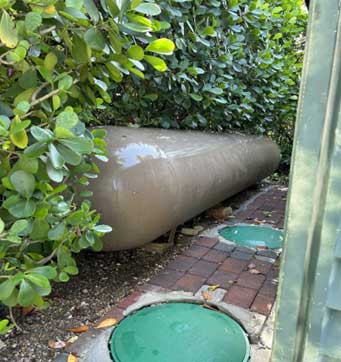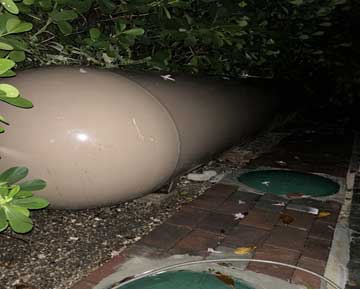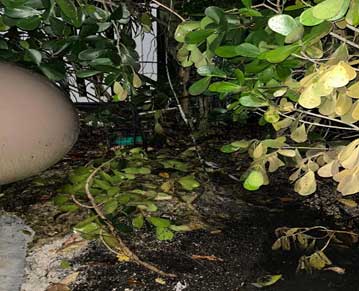Courtesy of Bill Gustin
Miami-Dade Fire/Rescue (MDFR) companies responded to a structure fire following a thunderstorm. They arrived to find a 7,500-volt primary power line down and arcing.
It wasn’t until the power company de-energized the power line and the arcing stopped that firefighters could see that they had come very close to losing their lives. When lightning brought down the power line, it fell within a few feet from a 1,000-gallon above-ground LP gas tank that was concealed by vegetation.

In this case the arcing was a clear indication of an energized power line, but it masked the view of the LP tank. MDFR reached out to an authority in the propane industry who advised that had the wire been closer or made contact with the tank that it would have sliced through it like a torch. The resulting vapor-air explosion could have killed or severely burned several firefighters who were on this assignment.



Power lines that are not arcing actually put firefighters at greater risk because they can be hard to see; especially at night, in heavy rain or concealed by trees or other vegetation. A power line that is not arcing can kill a firefighter just as fast as one that is arcing. It is very important to remember that a firefighter does not have to come into direct contact with a power line to be killed. Most firefighters have experienced a close call with wires down on a fence or vehicles. Similarly, downed wires can energize nearby objects such as water pipes, bushes, trees, buildings, CATV, and fiber optic cables. Downed power lines, in their relentless search for a ground, have an affinity for the metal reinforcement grid in concrete pavement and sidewalks, which can energize metal fence posts at great distances from the downed wire. Additionally, firefighters can be electrocuted within a few feet from high-voltage transmission lines, which can range from 115,000 to 500,000 volts. It is very important to remember that when a power line falls or touches another conductor, the electrical grid in the area may automatically de-energize for a few minutes and then automatically re-energize. This cycle of de-energizing and re-energizing can occur more than once. The takeaway from this near miss is to treat everything electrical as energized until tested and proven to be de-energized.
Firefighters should develop a muscle memory to always touch a metal fence with the back of their hands before opening a fence gate. Grasping an energized fence can cause an uncontrollable muscle contraction to the extent that firefighters cannot let go of it.
The lightning strike that caused this event also started three fires on this property. The high possibility of lightning starting more than one fire will be examined in a separate training zone.
BILL GUSTIN is a 49-year veteran of the fire service and a captain with Miami-Dade (FL) Fire Rescue. He began his fire service career in the Chicago area and is a lead instructor in his department’s Officer Development Program. He teaches tactics and company officer training programs throughout North America. He is a technical editor and an advisory board member of Fire Engineering and FDIC International.

